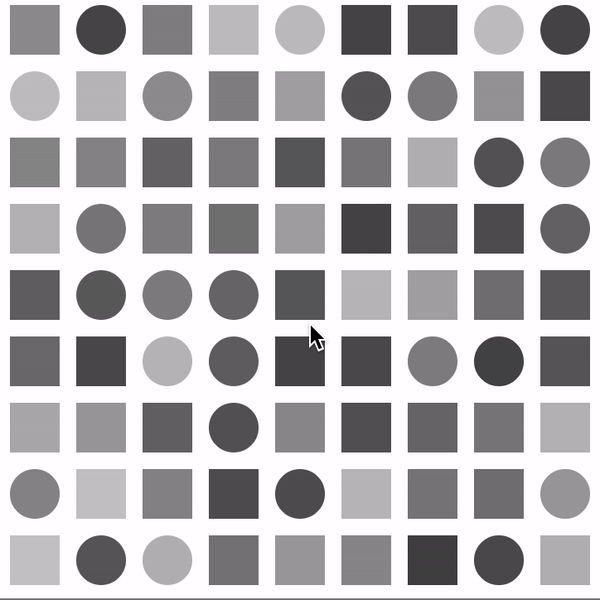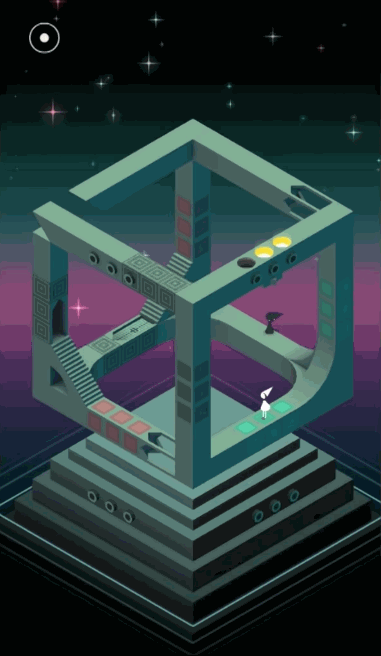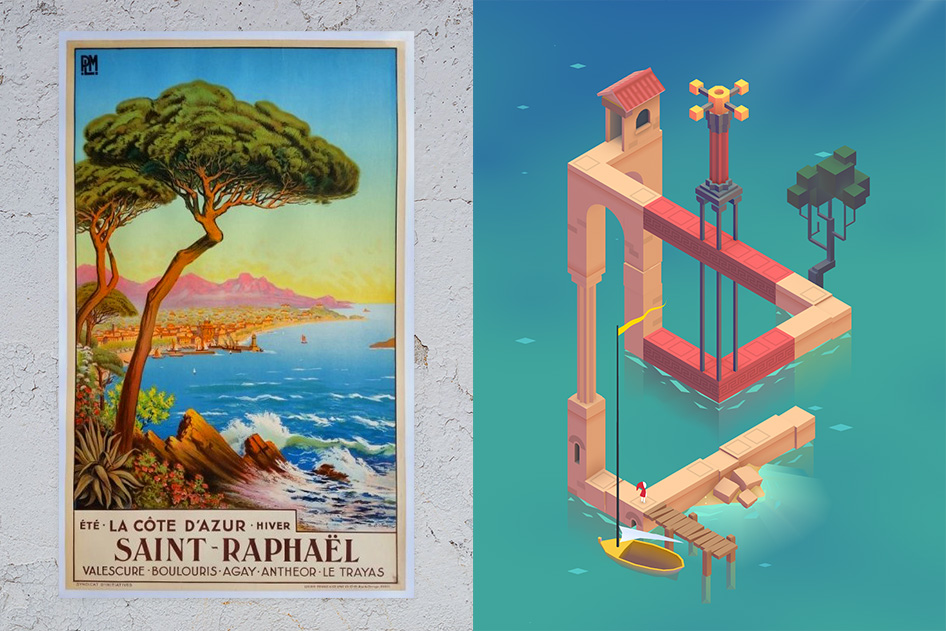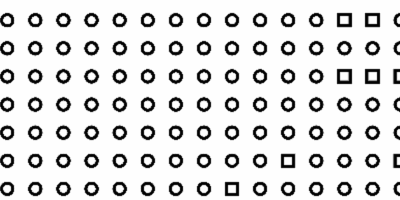https://editor.p5js.org/clox/full/lsoPKzam1

60212: INTERACTIVITY & COMPUTATION
CMU School of Art, Fall 2019 • Prof. Golan Levin
Monument Valley is an indie puzzle game developed and published by Ustwo Games, where the user manipulates the world of mazes of optical illusions and impossible objects in order to allow the Princess to reach a final platform.
I love this game because not only do the aesthetics and art style of the game really appeal to me (the color scheme is amazing and the UX of the entire game is incredibly satisfying and soothing), the puzzle part of this game is solved by utilizing the concept of impossible squares. I really admire this game because it almost breaks the laws of physics, and the user is required to "think outside of the box" to figure out the solutions for each puzzle. It takes advantage of the isometric art style and forces users to think about how the different structures can be moved around in order to find the solution. In addition, each level seems very different from the last (in that each setting and structure represents something else, from castles to moats, to random climbing structures), but still utilizes the same rules it establishes from the get go. I admire the simplicity of this game play, yet the game creation itself is quite complex.

The game was developed over ten months in 2013; the visual style was inspired by Japanese prints, minimalist sculpture, and other indie games. The creators drew a lot of inspiration from other artists and art history. The art was designed such that each frame would be worthy of public display. Ustwo is a digital design firm company that has designed iPhone apps since 2017.


"Changing the meaning and make it our own."
I find it really inspiring to see where these creators drew their own inspiration from. These other artworks gave ideas of more than just level design, but what the setting of a stage would look like, the color scheme of the structures, even the structure/castles themselves.
Although that the game appears 2D, it was built with 3D assets; custom-built extensions to the Unity Editor enabled Ustwo to create architecture that looks connected through the game-view camera, though in reality it isn't actually next to each other in world space.
One thing I found lacking within Monument Valley was it's story line, as it does have one and each stage opens with a quote that serves drama to the table, but I felt as though it made no difference to how I played the game. In fact, at times, it made no sense. I think adding a little story element behind why each structure was the way it is (why water here? why add the impossible square columns here?) can increase the gameplay experience.
The creators really did in effective job in creating a game where each still / snapshot of the gameplay is picturesque, making for a great screenshot. The way it thinks outside the box of physics really amazes me, and I admire it very much.
The eighth tenet of the Critical Engineering Manifesto describes how a Critical Engineer should draw from the past. They should look at themselves as continuing the same kind of work as artists, philosophers, activists, and inventors of yore, and they should learn from those people. They should learn from the strategies they used, as well as their goals. It's interesting that a seemingly radical movement should be also backwards facing. It sees value in what was done in the past even though the things it is responding to are so specific to our present circumstances.
For instance, a Critical Engineer could look at the ways modernists artists were responding to the introduction of machines into factories during the 19th century for how to respond today to automation in the workplaces of today.
5. The Critical Engineer recognizes that each work of engineering engineers its user, proportional to that user's dependency upon it.
As engineering and our feats of technology become more and more miraculous, so does our ability to see these miracles. Technology has become the norm in our lives, and because we rely on it, we take these works of engineering for granted. When we do so, when we rely on others for these technologies, we ourselves do not necessarily understand the hardships of life that would be without these works of engineering and as a result, our dependency for it.
Many people's ability to navigate the roads without the use of a GPS is bare, if even existent. Once, being able to read the stars and maps was as critical as warmth or shelter. However, today, it's a rare skill and I constantly wonder at many's survival skills if our GPS were suddenly taken away from us. For me, being in a foreign area, I'm very conscious of how much battery I have so that I am able to still use Google Maps to get home. This reliance must be recognized; the consequences can be detrimental otherwise.
3. The Critical Engineer deconstructs and incites suspicion of rich user experiences.
I found this tenet interesting because it relates to my work as a UX designer and neuroscience student, and has further implications for fields like VR. Maybe this is a stretch, but it reminds me of Baudrillard's writings on Simulations and Simulacra, and their social and political consequences.
From a commercial standpoint, the more immersive the user experience, the more profitable it is. As humans, we are attuned to subtle environmental differences that might signal danger, so we are excellent at distinguishing artificial environments from real ones. We become frustrated when an experience with software doesn't match up with mental models.
In most cases, frustration works against us. We want better UX for systems like transportation, education, or hospitals, to increase standards of living across the world. But for 'leisure' products like social media, we are paying with our attention, and paying with the data that tells advertisers what we'll pay attention to. In this situation, a richer UX means more control over our attention. It also means we have to work harder to determine which things are 'true' and what constitutes 'reality.' For example, with deepfakes, the immersive and realistic qualities of the technology are exactly what makes them so dangerous.
Mark Wheeler's This City is the piece that inspired me to learn openFrameworks. In the piece, Wheeler sits surrounded by a garden of synthesizers, MIDI controllers, and a laptop. Behind him, one sees a projection of infinite spanning roads packed with cars, which he controls with the MIDI devices around him. Part of the mysticism of the piece comes from the video composition: the dark room with subtle blips of light from the machines and the electronic music create a murky, ethereal tone. A moment that I especially admire is around the 1:18 minute mark where Wheeler cuts from footage of him turning a knob to the gravity disappearing in the scene.

This editing technique was able to convey a causal relationship in an elegant way. Mark coded the app himself using openFrameworks and co-directed the video with Clay Weishaar, and was assisted by Christine Cha. Around the time of the work, live coding audio visual had an exciting subculture forming, with tools such as Quil and Overtone becoming widely available. This project pointed towards an exciting future of coevolutionary works where audio and video have a direct relationship, instead of one controlling the other.

I had a spare minute and decided to attempt a small codegolf in shaders. I did the assignment without loops using distance functions and got it to 271 characters with hollow cores and antialiasing (241 without click random and antialias, 189 without hollow cores and antialias). The goal was to keep it under 280 characters.
